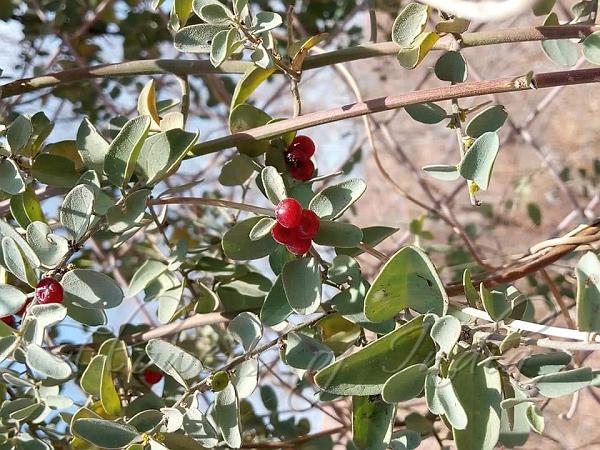|
| Pilwan |
|

|

|
|
|
|
Photo: |
Botanical name: Cebatha pendula Family: Menispermaceae (Moonseed family)
Synonyms: Cocculus ellipticus, Cocculus pendulus, Cocculus laevis
Synonyms: Cocculus ellipticus, Cocculus pendulus, Cocculus laevis
Pilwan is a climbing shrub with long slender, finely
velvet-hairy branchlets. Stems are up to 15 cm in diameter, branches
about 5-6 m long. Leaves are 1.6-5 cm long, 0.5-2 cm broad;
oblong-lanceshaped, ovate or trapezoid, base flat, wedge-shaped,
rounded or trilobed-arrow-shaped, tip blunt, with a short sharp point
or notched, generally hairless or slightly finely velvet-hairy on both
sides, basal nerves 3-5. Flowers are minute. Male flowers are borne in
leaf-axil panicles 0.5-2 cm long, with flower-cluster-stalks up to 1.5
cm long, flower-stalks 0.5 mm or absent; sepals ovate-elliptic, fleshy
or membranous, thickened at the base, the outer 3, 1-1.5 mm long,
0.4-0.7 mm broad, sparsely finely velvet-hairy, the inner 3 larger,
finely velvet-hairy to hairless. Petals are ovate-obovate, 0.8-2 mm
long, 0.5-1 mm broad; stamens 0.8-1.5 mm long. Female flowers are 1-2
on short in leaf-axils flower-cluster-stalks, 0.7-1.3 cm long; carpels
about 1 mm long. Fruit us reddish when fresh but turning black when
dried, kidney-shaped, compressed, 4-7 mm long, 4-5 mm broad; endocarp
ribbed on the lateral faces and without a prominent crest, not
perforated in the centre. Pilwan is found from Africa to NW India,
including the West Himalaya.
Flowering: nearly all year.
| Identification credit: Ankush Dave | Photographed in Jodhpur, Rajasthan. |
• Is this flower misidentified? If yes,